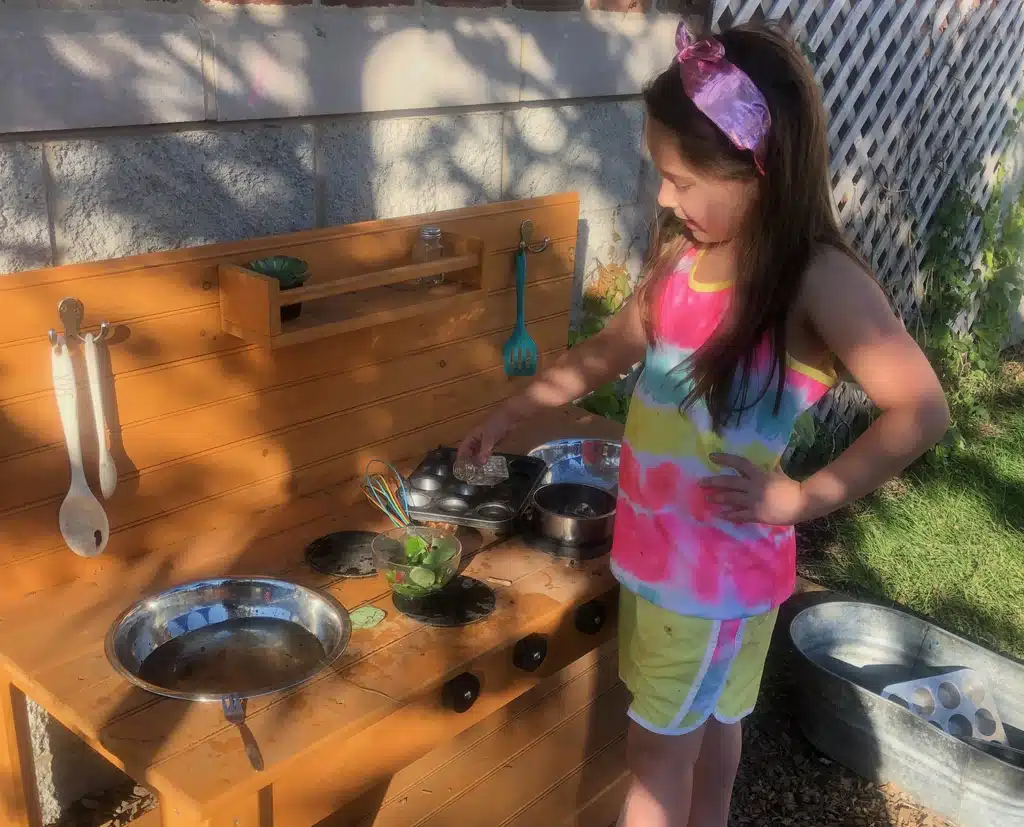The average American adult spends up to 90% of their lives indoors. Although school should prepare children for the future, we don’t always need to keep them behind four walls. Learning opportunities surround us, and spending time outside can help children develop in ways that can be hard to mimic in a classroom.
Bubbles Academy educators believe in having a “nature playground” where kids can interact with the environment. Here, we’ll explore the benefits of outdoor learning and ways to implement it.
Making Nature the Best Classroom
One argument we sometimes hear when talking about teaching lessons outside states that children won’t be able to focus. Claims include that there would be too much activity for them to pay attention to lessons, causing them to fail to learn. Their future grades would supposedly suffer.
The evidence we’ve gathered displays these fears as far from the truth.
The Learning Benefits of a Nature Playground
Studies and detailed evidence from various schools tend to show the exact opposite of these claims. Not only can you integrate a nature playground into early childhood development, but it also benefits older students. Due to the highly interactive nature of the outdoors, teachers have seen fewer behavioral issues, reduced ADHD symptoms, and higher grades.
In an interdisciplinary learning method, young children can learn various math and science concepts with hands-on experience. For example, as summer turns to autumn, they can learn about seasonal changes and become more curious about natural development. Educators can also integrate math through various activities, including gathering leaves, finding insects, or counting their steps.
A nature playground combines physical movement and interactive learning. Children develop gross motor skills, problem-solving abilities, and social education simultaneously. With practice, educators can also integrate other subjects, including reading and social studies, to promote inquiry-based learning.
The Health Benefits of a Nature Classroom
Since even adults can spend more time outside, children especially need to have activities in natural settings. Being outdoors can have many positive effects on our emotional well-being and physical health:
- Reduced blood pressure simply from sitting in nature
- Reduced stress levels from physical activity or resting outdoors
- Better sleep from increased energy exertion and sun exposure
- Reduced chances of bone disease from increased Vitamin D absorption
- Decreased chances of weight gain and obesity from outdoor activities and exercise
- Better immune systems from exposure to germs in a safer environment
With so many direct health benefits, spending at least some classroom time outdoors makes perfect sense. However, many educators may find it challenging to learn how to use a nature playground to their advantage. Even with the learning curve, many resources have come out detailing ways to help kids learn outdoors.
Using the Outdoors as a Classroom
Outdoor educational programs may benefit from using nontraditional lessons. Although these methods may not fulfill standardized testing benchmarks that require paper homework, they ensure the children have more opportunities to understand lessons.
Preschoolers can use paper records for information other than homework. For example, educators can help children record how many branches they find on the ground.
Moreover, the lesson can assist the child in learning about situational awareness and identifying objects not often seen indoors. Asking them to recognize colors, like red, green, or yellow, in the environment allows them to learn colors and problem-solving at the same time.
A good portion of preschool education involves cooperation and clear communication. Spending time outdoors gives them ample opportunity to associate with their friends.
A nature playground allows them to create games in their natural environment and learn how to share limited resources in open spaces. Educators can incorporate many outdoor activities into a fun lesson:
- Leaf collecting
- Bird watching
- Nature letters (making letters out of natural resources)
- Ball-based sports
How To Face Potential Difficulties
Some educational organizations may not have used a nature playground due to potential difficulties with the environment. For example, schools or places located in urban areas may not have easy access to a natural park. Additionally, some children may have physical disabilities that make navigating natural areas more difficult than their peers.
Even so, with careful planning, many educational organizations can establish a class of outdoor time that benefits each child. Doing so may require further consideration or accommodation, but the learning and health benefits make the effort worth it:
- Collaborate with locals: Educators can associate with local nature parks to establish times for them to visit with their students.
- Prepare before arrival: Teachers should always know safety precautions for outdoor spaces, including identifying potentially harmful plants and first aid.
- Include everyone: Outdoor activities should be able to accommodate children in the group with physical or learning disabilities. Measures can include going to parks with flatter surfaces and focusing on group activities.
We Want the Best Opportunities for Your Kids
Bubbles Academy wants all kids in Chicago to have the opportunity to learn in the best environments possible. A nature playground gives them many health and educational benefits, so we ensure their safety and encourage their exploration.
Do you want to know more about how we can help your child learn outdoors? Visit our contact page today and check in with us!

